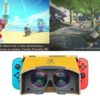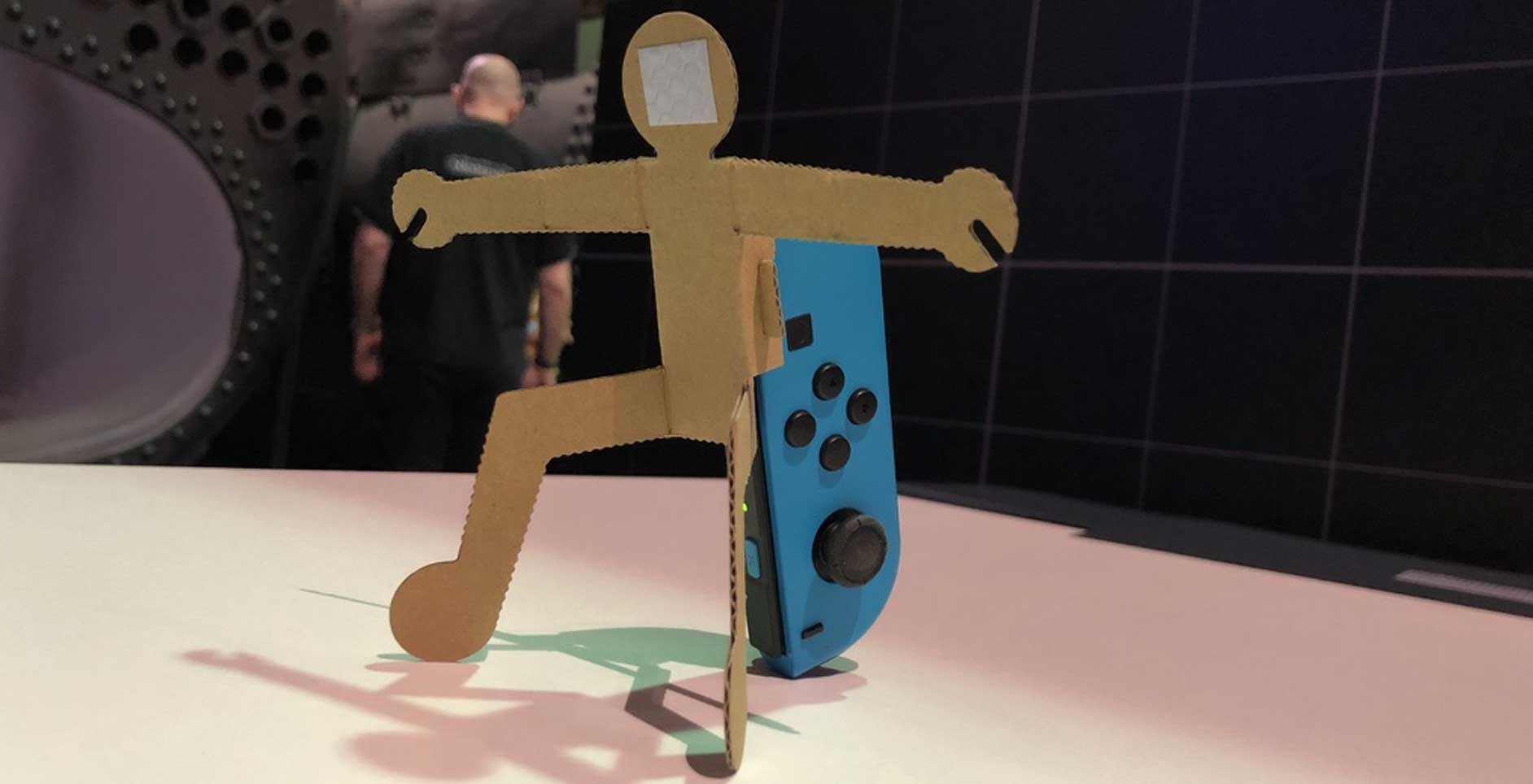Nintendo have a history of creating unique and innovative products that are also really tough to market, but Labo just might be their biggest challenge yet. Not only do they need to convince people that a box full of cardboard is a worthy investment, but they have to try to explain how their vision extends beyond just the models and experiences that will be provided on launch.
After having attended a hands-on preview event this past week I can already confirm that Labo is legit. Everything about the two kits launching this April are as intuitive and impressive as Nintendo have been promising, and those concerned about the quality of the materials and the supporting software can stop worrying. Building the various models in the Variety and Robot Toy-Con packs is a blast, and the games designed to support them are feature-rich and full of plenty of ‘wow’ moments. By far the most interesting feature however is the one that Nintendo have arguably spent the least time talking about, and that’s the Toy-Con Garage.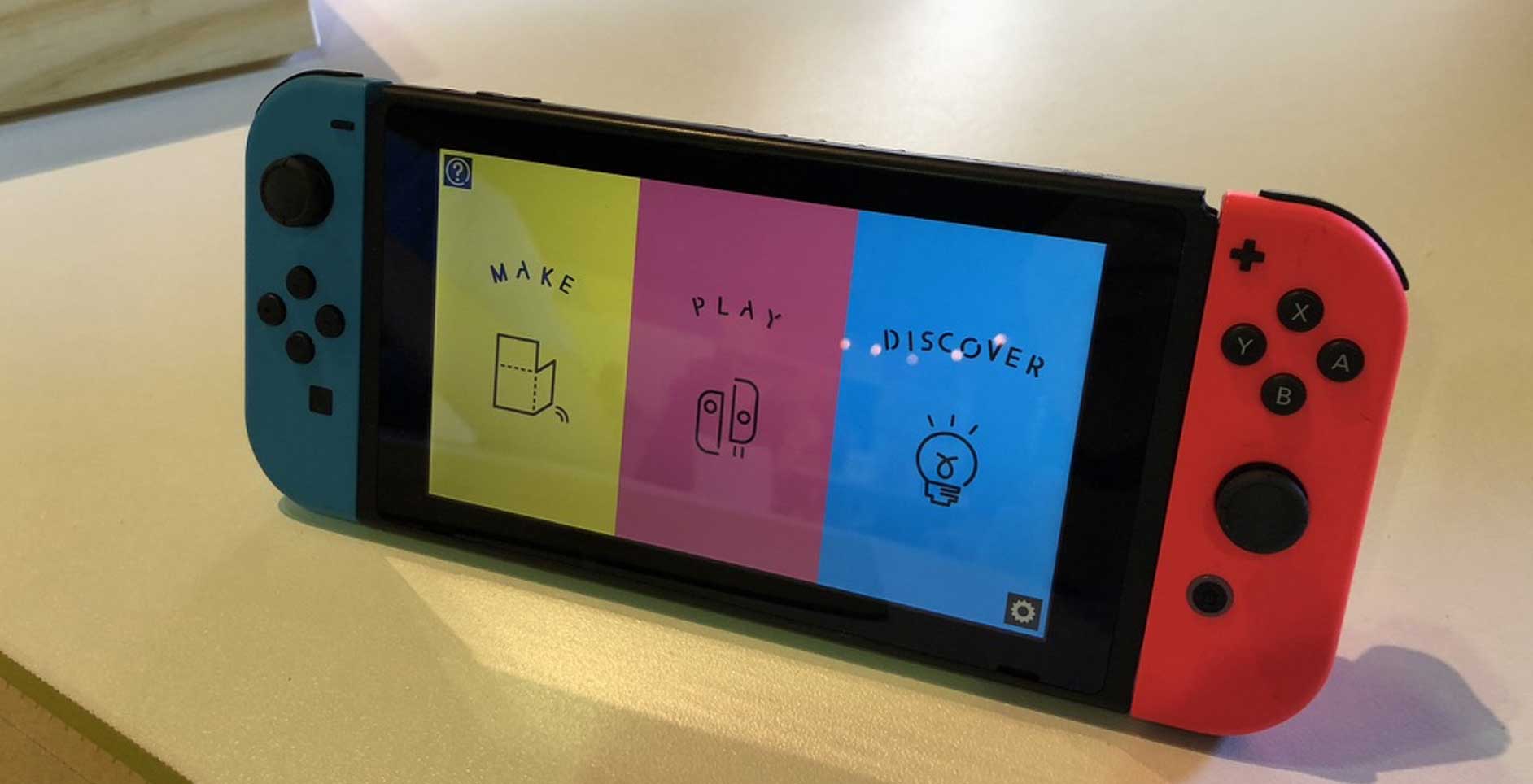 Nintendo Labo’s formula for DIY fun is governed by three distinct pillars – Make, Play and Discover, and it’s by this same ethos that our hands-on time with the product was dictated. After constructing a simple kit in the Make area, and then having a Play of all of the games that come with the two kits, it was time Discover the Toy-Con Garage. The couple of small desks that Nintendo had set up for this portion of our session were almost as unassuming and easy-to-miss as the actual Garage, itself a small icon tucked away at the bottom of the Labo software’s Discover panel. Sitting on these desks were a couple of Switch consoles, but none of the core Labo model kits that we’d become familiar with prior. Instead we found some simple cardboard cut outs, a few arts and crafts materials from the local Bunnings and a couple of very excited representatives.
Nintendo Labo’s formula for DIY fun is governed by three distinct pillars – Make, Play and Discover, and it’s by this same ethos that our hands-on time with the product was dictated. After constructing a simple kit in the Make area, and then having a Play of all of the games that come with the two kits, it was time Discover the Toy-Con Garage. The couple of small desks that Nintendo had set up for this portion of our session were almost as unassuming and easy-to-miss as the actual Garage, itself a small icon tucked away at the bottom of the Labo software’s Discover panel. Sitting on these desks were a couple of Switch consoles, but none of the core Labo model kits that we’d become familiar with prior. Instead we found some simple cardboard cut outs, a few arts and crafts materials from the local Bunnings and a couple of very excited representatives.
Up until now Nintendo have spoken briefly about the potential for creativity and invention with Labo, but mostly in the context of customising and retooling the existing kits. Toy-Con Garage goes one step further than that and allows you to dive in and actually program the cardboard. Not just the supplied bits either, but any carboard. Heck, if you can find a way to incorporate the Joy-Con controllers and/or the Switch itself, you can make Labo creations with just about anything.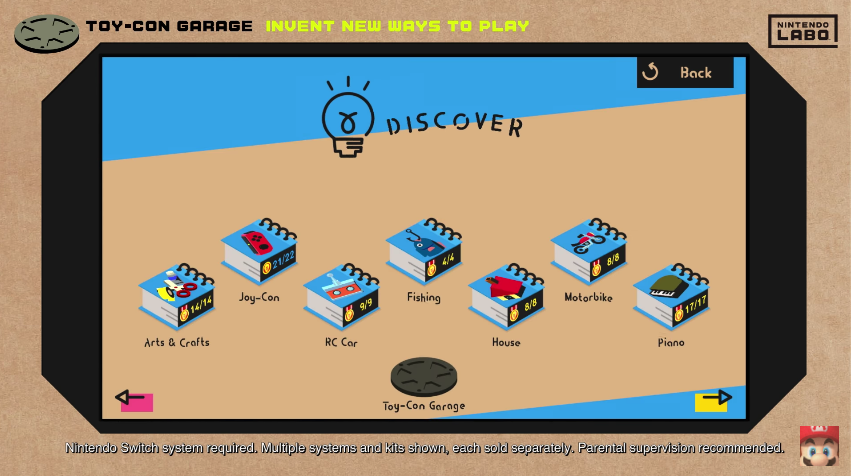 The way this works is through a simple and intuitive visual coding system that uses basic if/then statements to control the system’s various methods of input and produce a resulting action. A basic example would be something like this: take two Joy-Cons, one in hand and the other strapped to a cardboard man, and add an input control that determines whether the trigger on the first Joy-Con has been pressed. Then it’s as easy as connecting that action to an output that tells the other Joy-Con to vibrate, causing the cardboard man to fall down. Magic.
The way this works is through a simple and intuitive visual coding system that uses basic if/then statements to control the system’s various methods of input and produce a resulting action. A basic example would be something like this: take two Joy-Cons, one in hand and the other strapped to a cardboard man, and add an input control that determines whether the trigger on the first Joy-Con has been pressed. Then it’s as easy as connecting that action to an output that tells the other Joy-Con to vibrate, causing the cardboard man to fall down. Magic.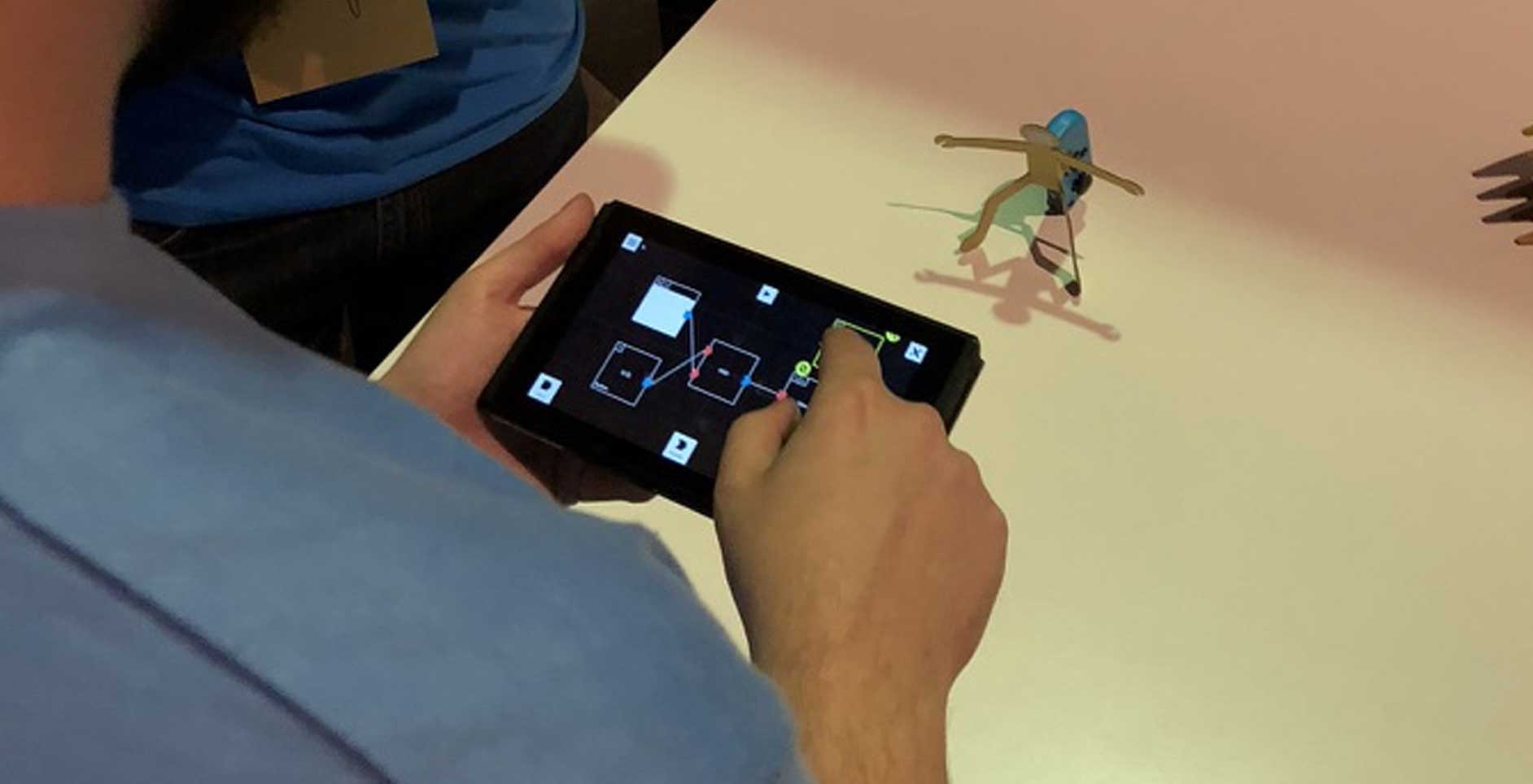 Once you can grasp the basics of this cause-and-effect system, it’s easy to start laying down some extra complexity. Perhaps just pressing a button isn’t enough and you want to challenge people to actually aim the Joy-Con directly at your cardboard man before he’ll go down – with some help from the right Joy-Con’s handy IR sensor and some reflective tape you can add a condition that looks for that, too. All of this is constructed using a clean and simple visual interface that shows each function as nodes that can be connected to each other to form the logic of the creation. Some of the Nintendo representatives’ programming was a simple as a couple pairs of nodes forming an if/when statement like the example above, while others were dense networks of nodes and connections that I would have loved to pick apart had I the time to spare.
Once you can grasp the basics of this cause-and-effect system, it’s easy to start laying down some extra complexity. Perhaps just pressing a button isn’t enough and you want to challenge people to actually aim the Joy-Con directly at your cardboard man before he’ll go down – with some help from the right Joy-Con’s handy IR sensor and some reflective tape you can add a condition that looks for that, too. All of this is constructed using a clean and simple visual interface that shows each function as nodes that can be connected to each other to form the logic of the creation. Some of the Nintendo representatives’ programming was a simple as a couple pairs of nodes forming an if/when statement like the example above, while others were dense networks of nodes and connections that I would have loved to pick apart had I the time to spare.
Like any good programming tool, what starts as a simple set of tools can quickly transform into almost limitless possibilities in the right hands. After coming to understand the basics of Toy-Con Garage my mind was already firing on all cylinders, cooking up ideas to try out as soon as I get a hold of Nintendo Labo for myself. I’ve already devised a fairly comprehensive system for a cardboard version of Laser Tag, among other things. Oh, and I fully expect to see somebody come up with a cardboard Battle Royale game. In fact, that somebody will probably be me.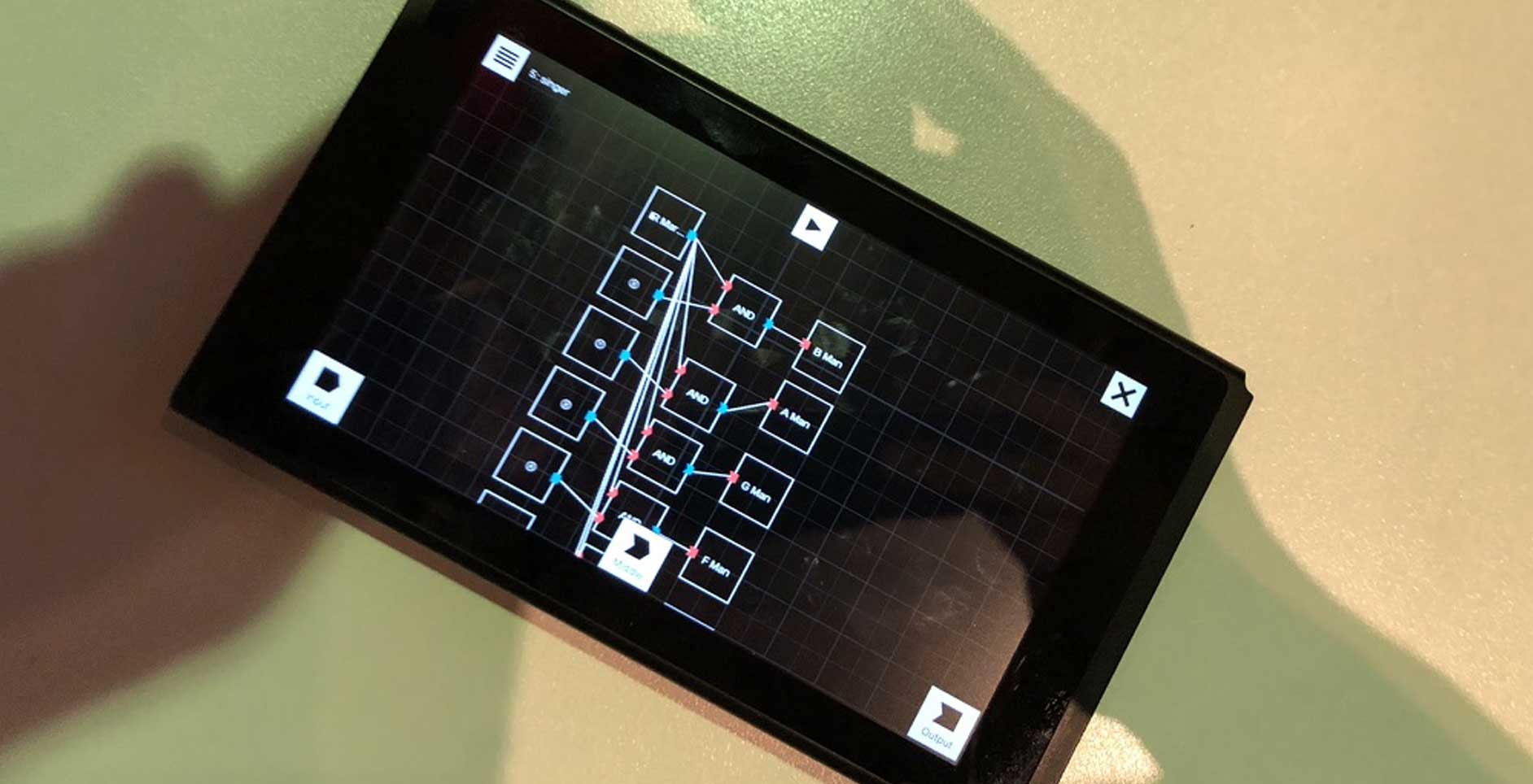 So far we’ve seen a lot of what Nintendo Labo can do to nurture engineering minds as well as artistic minds, so it’s exciting to see that the same goes for budding programmers young and old. Before now I’d had high hopes for Labo, albeit with some degree of hesitation around the carboard itself and the limitations of what can be achieved with more ‘homebrew’ designs, so it’s great to see that there are almost none.
So far we’ve seen a lot of what Nintendo Labo can do to nurture engineering minds as well as artistic minds, so it’s exciting to see that the same goes for budding programmers young and old. Before now I’d had high hopes for Labo, albeit with some degree of hesitation around the carboard itself and the limitations of what can be achieved with more ‘homebrew’ designs, so it’s great to see that there are almost none.
Now if you’ll excuse me I need to go hit up Officeworks for some more materials for Carboard Laser Tag Simulator 2K18.
Nintendo Labo releases in Australia on April 20th.
